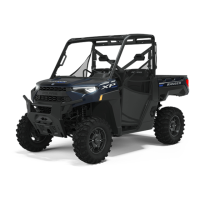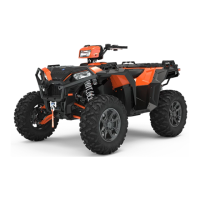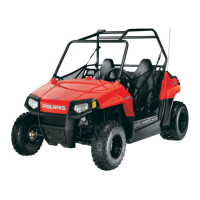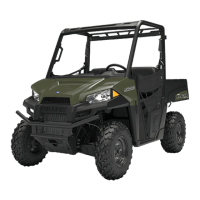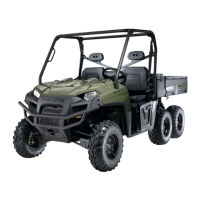OPERATING WITH A LOAD ON THE VEHICLE
The weight of both cargo and operator impacts vehicle operation and stability.
For your safety and the safety of others, carefully consider how your vehicle is
loaded and how to safely operate the vehicle. Follow the instructions in this
manual for loading, tire pressure, gear selection and speed.
• Do not exceed vehicle weight capacities. The vehicle’s maximum weight
capacity is listed in the specifications section of this manual and on a label on
the vehicle. When determining the weight you are adding to the vehicle,
include the weight of the operator, accessories, loads in the rack or box and
the load on the trailer tongue. The combined weight of these items must not
exceed the maximum weight capacity.
• The recommended tire pressures are listed in the specifications section of this
manual and on a label on the vehicle.
Always follow these guidelines:
UNDER ANY OF THESE CONDITIONS: DO ALL OF THESE STEPS:
Operator and/or cargo exceeds half the
maximum weight capacity
1. Slow down.
2. Verify tire pressure.
3. Use extra caution when operating.
Operating in rough terrain
Operating over obstacles
Climbing an incline
Towing
IMPROPER TIRE MAINTENANCE
WARNING
Operating this vehicle with improper tires or with improper or uneven tire
pressure could cause loss of control or accident. Always use the size and type
of tires specified for your vehicle. Always maintain proper tire pressure as
described in the owner's manual and on safety labels.
OPERATING ON PAVEMENT
This vehicle's tires are designed for off-road use only, not for use on pavement.
Operating this vehicle on paved surfaces (including sidewalks, paths, parking
lots and driveways) may adversely affect the handling of the vehicle and may
increase the risk of loss of control and accident or rollover. Avoid operating the
vehicle on pavement. If it's unavoidable, travel slowly, travel short distances and
avoid sudden turns or stops.
28
SAFETY
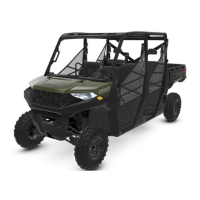
